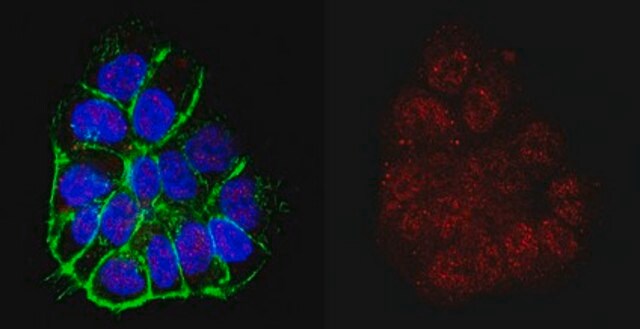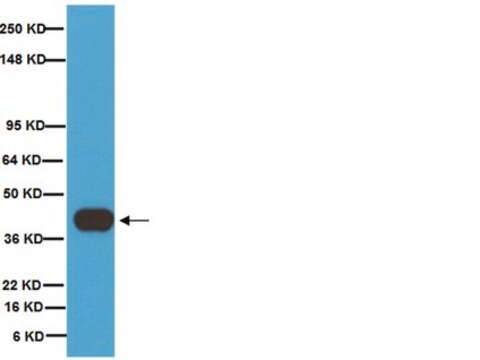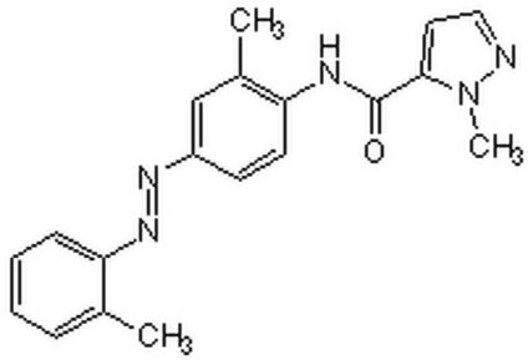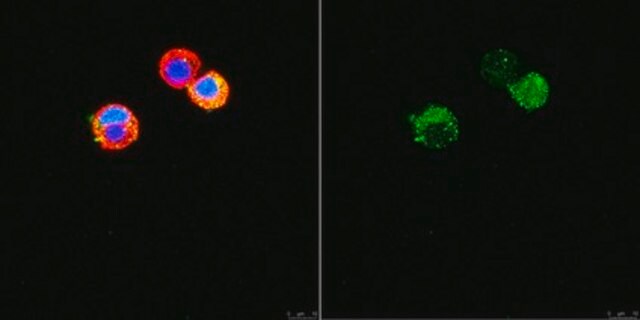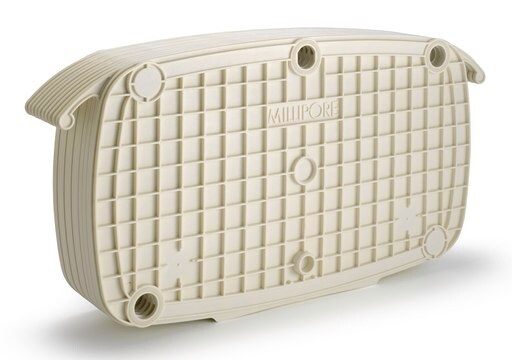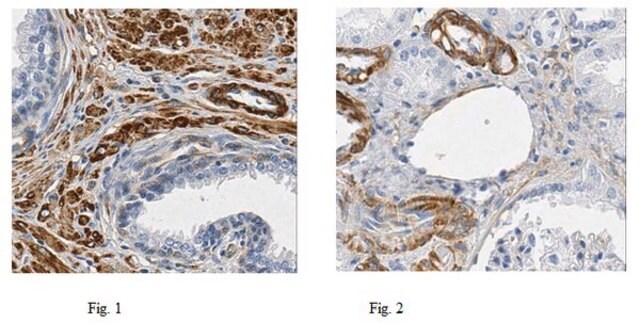MAB131884
Anti-BASE-tag Antibody, clone 7C7
clone 7C7, from mouse
Synonym(s):
Capsid protein VP1, Capsid protein AVV9
About This Item
Recommended Products
biological source
mouse
antibody form
purified immunoglobulin
antibody product type
primary antibodies
clone
7C7, monoclonal
species reactivity
adenovirus-infected cells, virus
packaging
antibody small pack of 25 μL
technique(s)
immunofluorescence: suitable
immunoprecipitation (IP): suitable
western blot: suitable
isotype
IgG2bκ
UniProt accession no.
target post-translational modification
unmodified
General description
Specificity
Immunogen
Application
Immunofluorescence: A representative lot detected EGFP-BASE-tag-Actin in HeLa cells transfected with EGFP-BASE-tag-Actin (Courtesy: Dr. Thomas Weber, Icahn School of Medicine at Mount Sinai, New York).
Inflammation & Immunology
Quality
Western Blotting Analysis: A 1:500 dilution of this antibody detected BASE-tag in HEK293 cells transfected with GFP-7C7-Actin.
Physical form
Storage and Stability
Other Notes
Disclaimer
Not finding the right product?
Try our Product Selector Tool.
Certificates of Analysis (COA)
Search for Certificates of Analysis (COA) by entering the products Lot/Batch Number. Lot and Batch Numbers can be found on a product’s label following the words ‘Lot’ or ‘Batch’.
Already Own This Product?
Find documentation for the products that you have recently purchased in the Document Library.
Our team of scientists has experience in all areas of research including Life Science, Material Science, Chemical Synthesis, Chromatography, Analytical and many others.
Contact Technical Service